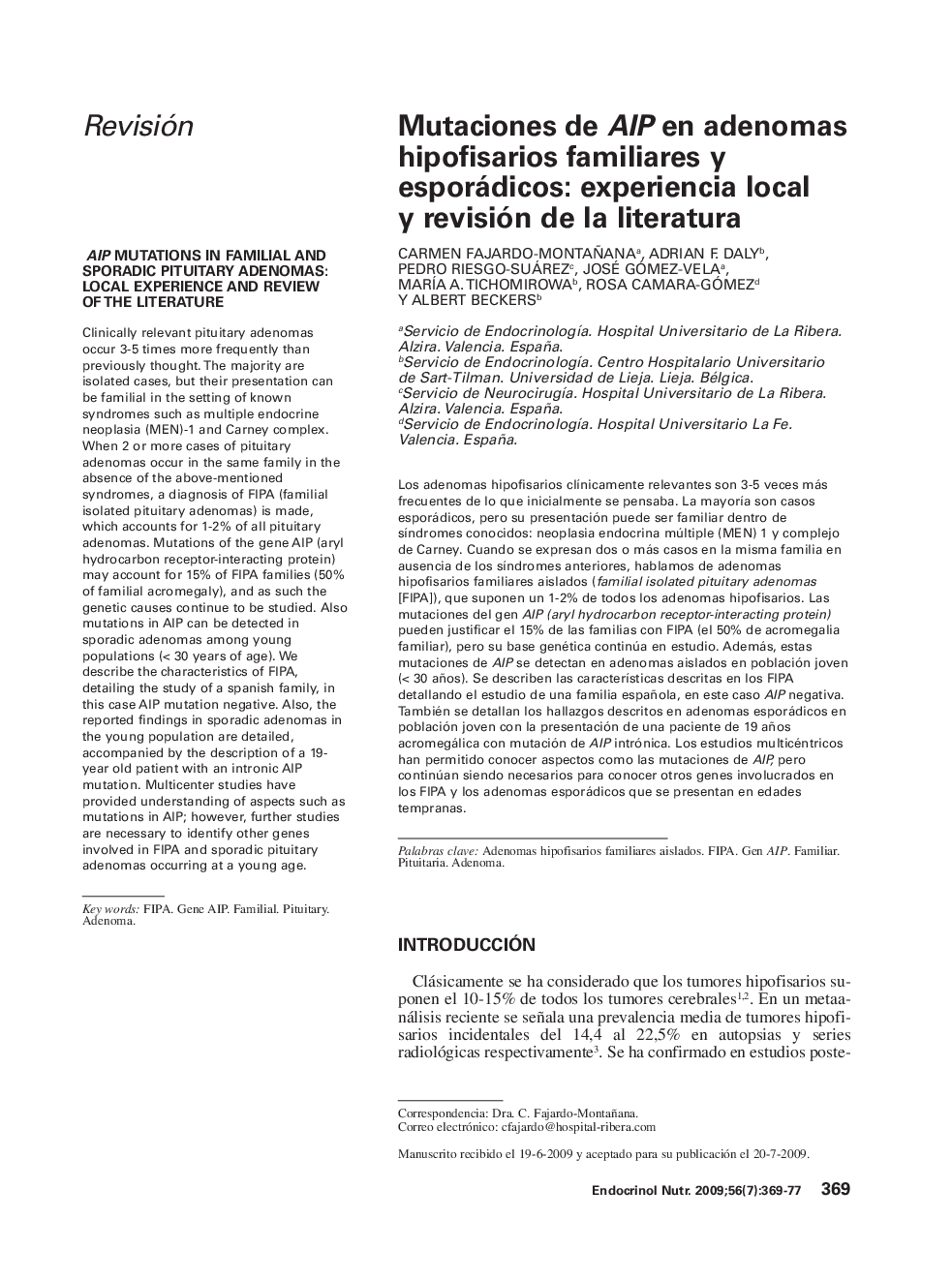| Article ID | Journal | Published Year | Pages | File Type |
|---|---|---|---|---|
| 2773945 | Endocrinología y Nutrición | 2009 | 9 Pages |
Abstract
Clinically relevant pituitary adenomas occur 3-5 times more frequently than previously thought. The majority are isolated cases, but their presentation can be familial in the setting of known syndromes such as multiple endocrine neoplasia (MEN)-1 and Carney complex. When 2 or more cases of pituitary adenomas occur in the same family in the absence of the above-mentioned syndromes, a diagnosis of FIPA (familial isolated pituitary adenomas) is made, which accounts for 1-2% of all pituitary adenomas. Mutations of the gene AIP (aryl hydrocarbon receptor-interacting protein) may account for 15% of FIPA families (50% of familial acromegaly), and as such the genetic causes continue to be studied. Also mutations in AIP can be detected in sporadic adenomas among young populations (< 30 years of age). We describe the characteristics of FIPA, detailing the study of a spanish family, in this case AIP mutation negative. Also, the reported findings in sporadic adenomas in the young population are detailed, accompanied by the description of a 19- year old patient with an intronic AIP mutation. Multicenter studies have provided understanding of aspects such as mutations in AIP; however, further studies are necessary to identify other genes involved in FIPA and sporadic pituitary adenomas occurring at a young age.
Related Topics
Life Sciences
Biochemistry, Genetics and Molecular Biology
Clinical Biochemistry
Authors
Carmen Fajardo-montañana, Adrian F. Daly, Pedro Riesgo-suárez, José Gómez-vela, MarÃa A. Tichomirowa, Rosa Camara-gómez, Albert Beckers,
